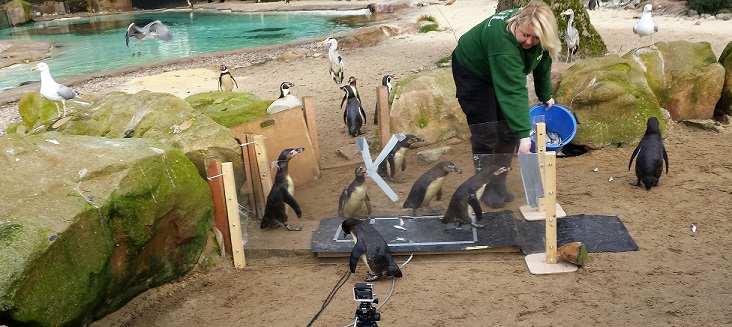Why the waddle?
Professor John Hutchinson's recent visit to Penguin Beach at London Zoo has gathered international attention from BBC News to The New Yorker.

Professor Hutchinson is collaborating with visiting PhD student James Proffitt, from the University of Texas at Austin, to investigate the waddling gait used by penguins. It is not clear why penguins waddle or how they have evolved to do so. This attracts much scientific curiosity as other wing-propelled diving birds tend to fly when not in water, or walk in more normal ways for birds.
Data collection brought the researchers to London Zoo. They coaxed the penguins across a platform containing force plates, capturing the movement with multiple cameras. This enabled them to observe the penguins' posture and measure how force is applied across each leg. These data will now be studied to provide new insight into the biomechanics of the penguin gait.
A specialist in evolutionary biomechanics, Professor Hutchinson aims to use this grasp of the contemporary biomechanics as a foundation for understanding why penguins have evolved to move this way on land. Calling on the expertise of James Proffitt, a palaeobiologist working with famed palaeo-ornithologist Julia Clarke, this will involve tracing the evolution of the numerous species of penguins back through their ancestors using fossil comparisons.

